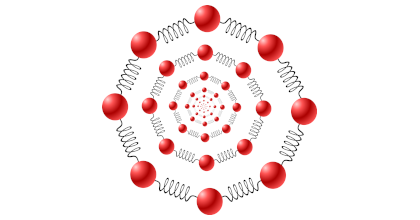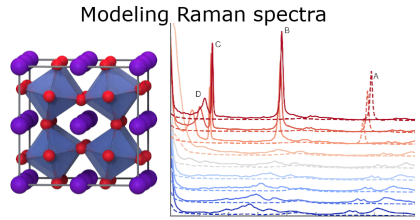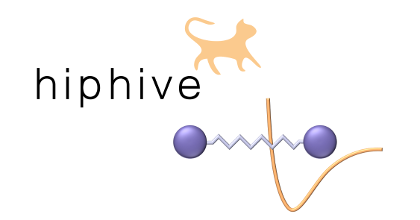Investigating the quantum dynamical nature of perovskites utilizing path integral molecular dynamics
L. Svensson
Master′s Thesis
(2024)
doi: 20.500.12380/307979
Perovskites are a group of materials with the chemical formula ABX3, known for there many structural phases, separated by small energy differences. Perovskite oxides are a subset where oxygen atoms occupy the X positions, resulting in the formula ABO3. Perovskite oxides exhibit a broad range of chemical properties and are used in applications such as solid-oxide fuel cells and photocatalysis. Examining and understanding their ground state structure is crucial for optimizing their use in various applications. Molecular dynamics (MD) is an established and effective atomic simulation technique for acquiring thermal and dynamical material properties, and therefore a great tool when investigating crystal structures. However, due to its reliance on Newton’ s equations of motion for updating atomic positions and velocities, MD offers a classical description of the atomic motion, thereby neglecting quantum effects. This becomes an issue at low temperatures and for light elements, such as oxygen. Path integral molecular dynamics (PIMD) and thermostatted ring polymer molecular dynamics (TRPMD) addresses this limitation by employing an effective Hamiltonian derived from the quantum mechanical partition function, thus including quantum effects. In this thesis we start by benchmarking the PIMD and TRPMD methods on aluminum. PIMD simulations are used to investigate the thermal expansion, while TRPMD is employed to examine the temperature dependence of the phonon frequencies and phonon lifetimes. The results are compared to classical MD simulations and quantum mechanical methods, such as self-consistent phonons and perturbation theory, showing that PIMD and TRPMD can be used to obtain thermal and dynamical material properties including quantum effects. After benchmarking the method we proceed utilize it to analyze the quantum mechanical behavior of perovskites. In this thesis, PIMD is used to construct the pressure-temperature phase diagram in the vicinity of the cubic-to-tetragonal structural phase transition in barium zirconate (BaZrO3). The results indicate that this structural phase transition is suppressed by quantum fluctuations at pressures between 0 GPa and 5 GPa. Furthermore, phonon frequencies and phonon lifetimes of BaZrO3 are probed through TRPMD, revealing that the dynamical properties are strongly influenced by quantum effects at low temperatures, with some impact observed at temperatures as high as 400 K. Additionally, a phase diagram of strontium zirconate (SrTiO3) is presented, including the cubic-to-tetragonal phase transition as well as the paraelectric-to-ferroelectric phase transition. The constructed phase diagram reveals that while the cubic to tetragonal phase transition remains mostly unaffected by quantum effects, the paraelectric-to-ferroelectric transition is shifted to lower pressures upon their inclusion.



